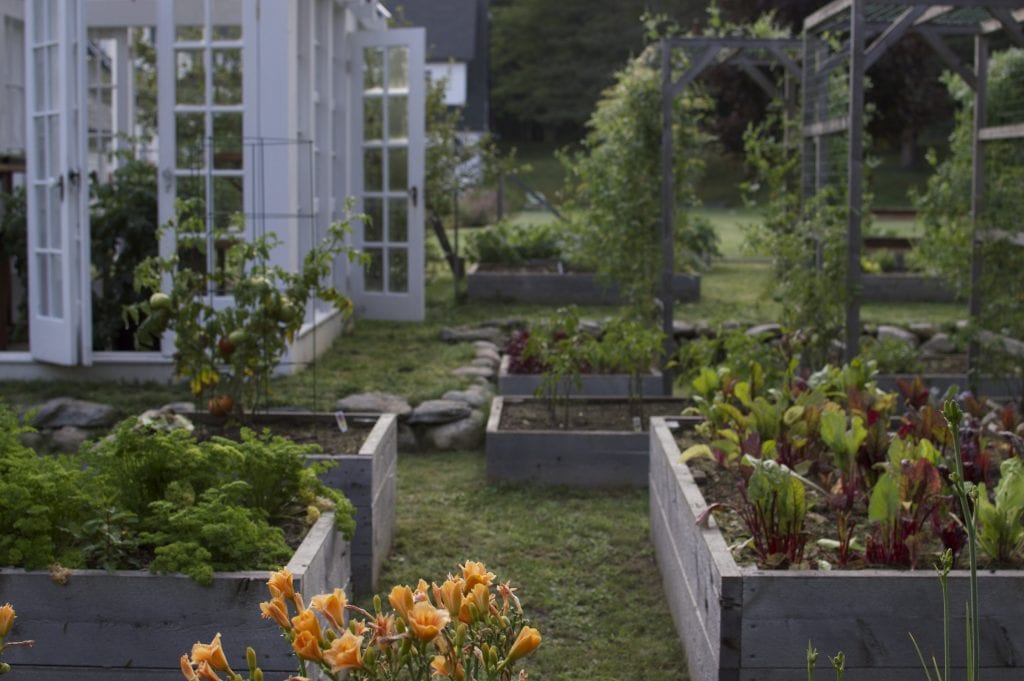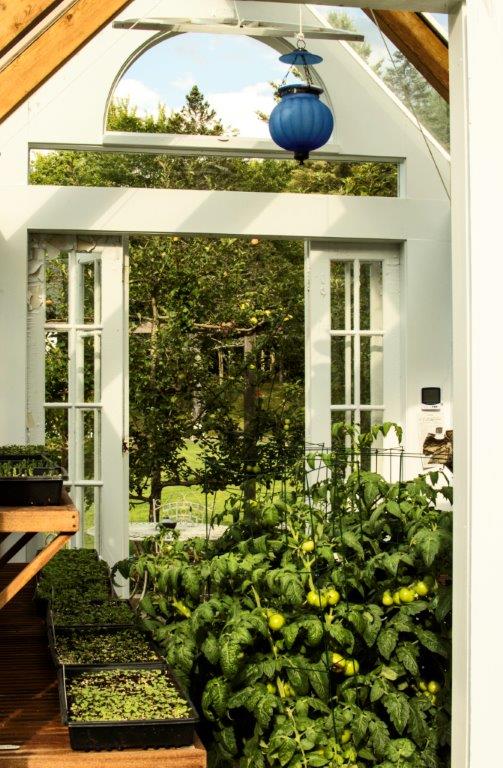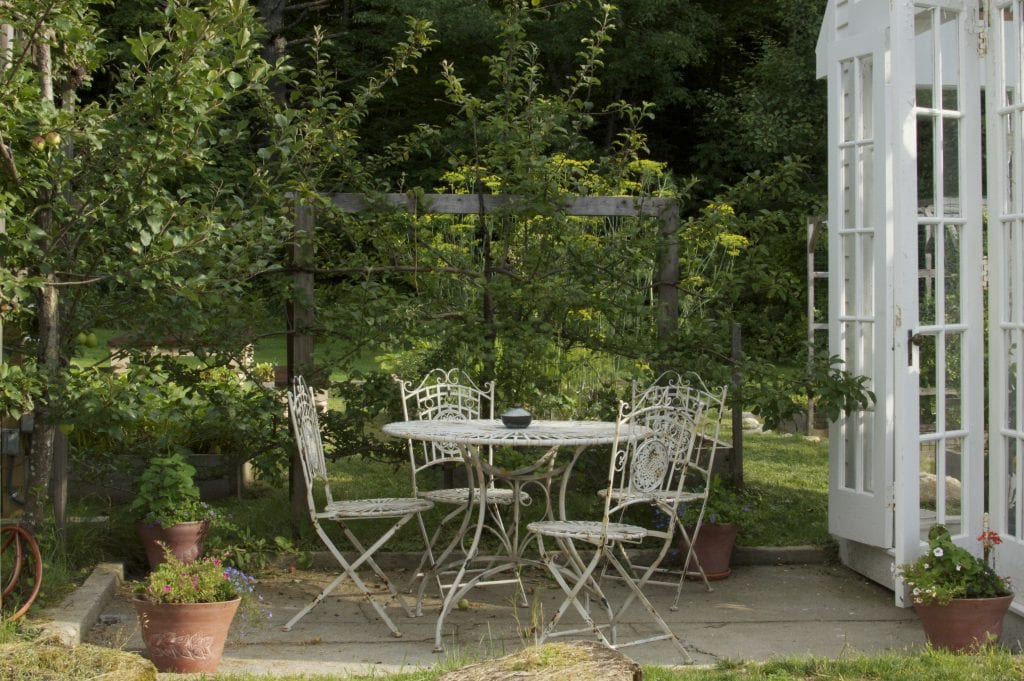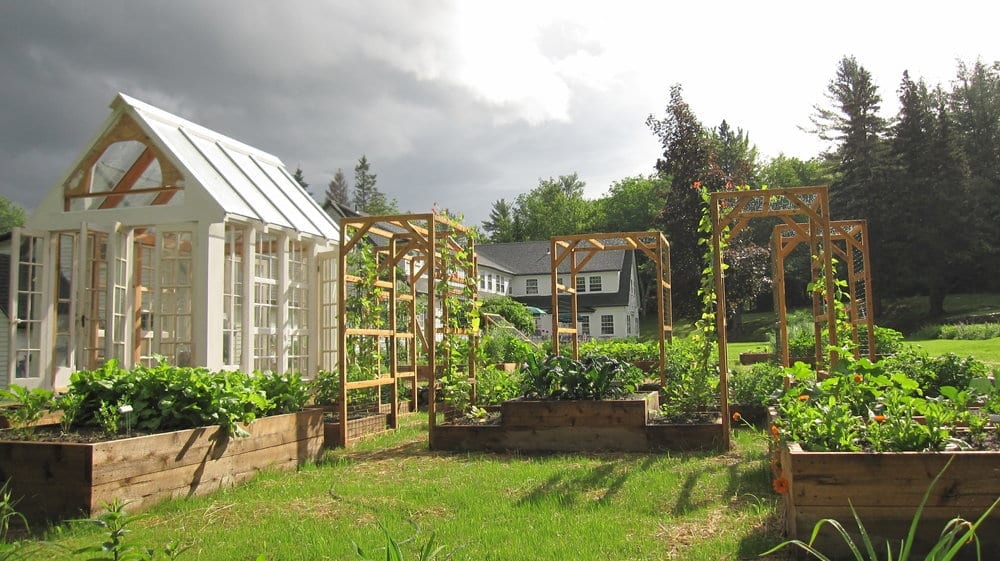In the autumn of 2012, the Horse & Hound and Two Sisters Garden and Landscaping collaborated to create a simple, productive, and decorative garden to provide culinary herbs and vegetables for the inn. The care and cultivation of the Kitchen Garden is detailed below.

Initial layout of the Kitchen Garden, prior to construction of the Greenhouse, 2012
Excellent Soil & Organic Fertilizer
When putting in the raised beds we used excellent base soil with a little more clay content than sand in the raised beds, so they retain moisture. We use all organize fertilizer with specific plant nutrients and trace elements derived from treated animal manures, natural rock minerals, and seaweed. To maintain a healthy, living soil, we add organic cultured compost to the beds, and a lot of earthworms.

View from the Kitchen Garden and Greenhouse toward the inn in the background
Vertical Growth
The Kitchen Garden was designed and built with vertical growth in mind. Plants thrive when they have fresh water, fertile soil, sunlight, and air circulation. Raised beds and trellises provide air circulation which helps prevent bacterial and fungal pests. It also encourages the soil to efficiently absorb and drain water for optimum plant health.

Tomato plants in the Greenhouse
Bed Rotations
With organic gardening (food production that does not use chemical pesticides) bed rotations are important. If one type of vegetable is replanted in the same soil for several years insect, fungal, or bacterial pests can establish in that soil and attack that plant year after year. Most pests are host-specific, or they target a particular plant or plant family. Our vegetables are generally broken up into family groups and those groups are planted in different beds each year avoid pest problems and guarantee optimum plant and garden soil health.

Seating area outside the Greenhouse, surrounded by the Kitchen Garden
